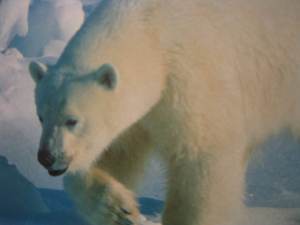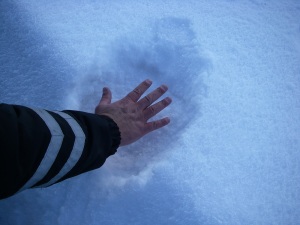 There is a downside to situational awareness.
There is a downside to situational awareness.
I discovered this fact while 868 miles north of the Arctic circle, 600 miles south of the North Pole. It took place in Ny-Ålesund, Svalbard, a part of the well-known island Spitsbergen.
I was helping the Smithsonian Institution train divers in polar diving. My job was to teach them about scuba regulator performance in frigid water.
A fact of life in Ny-Ålesund, the most northern continuously occupied settlement, a research village, is that Polar Bears are always a threat. In fact, one came through town during our visit to Svalbard. The Greenland sled dogs, tied down outside, were understandably, and quite noisily, upset. The bear walked right past them.
After the excitement of that nighttime polar bear prowl had begun to wane, the incident remained as a not so subtle reminder during seemingly routine activities. For you see, polar bears are emotionless killers; to them, we are prey. Tracking and eating a human gives it no more pause than us picking blackberries alongside the road. For adult polar bears, humans are simply a conveniently-sized food item, not nearly so fast and wily as their typically more available meals, seals.
Unlike the ploy of divers bumping potentially predatory sharks on the nose to dissuade them from biting, bumps on the nose don’t work with polar bears. Without a gun by your side, a walk in Svalbard is a walk on the wild side, and not in a good way.
 I was observing and photographing boat-based diving operations from the end of a long pier jutting 375 feet (115 m) into the Kongsfjorden. Normally in March the fjord is ice covered, but the year I was there (2007) there was no ice to be seen except at the nearby glacier.
I was observing and photographing boat-based diving operations from the end of a long pier jutting 375 feet (115 m) into the Kongsfjorden. Normally in March the fjord is ice covered, but the year I was there (2007) there was no ice to be seen except at the nearby glacier.
I had been standing at the pier’s end for a while taking photographs, and soaking up the polar ambiance, when I looked back and realized that from a safety standpoint, I was vulnerable. That is when situational awareness began to kick in.
We were in a deserted, industrial portion of the town. The old coal mining operations were shut down long ago. Other than the divers on and in the water, I was the only one around. And I was stuck out on the end of a very long pier, with no means of escape.
If an intruding and hungry bear made its appearance at the land side of the pier, I would be trapped. Although I was dressed for cold, I was not dressed for cold water. That water was, after all, ice water. Polar bears, on the other hand, are excellent swimmers in polar water. So after I’d jumped into the water, which I would have if faced with no alternative, it would have taken the bear only a few furry strokes before he would have me. While he or she would find my body parts chilled on the outside, my internals would still be pleasantly warm as they slid down its gullet.
Being a sensible person, I called the boat drivers over and put them on alert; should a polar bear appear at the far, land-side end of the pier, they should pick me up post haste. Otherwise, there would be no way I could safely escape from my vulnerable position. No photograph is worth dying for.
Being nice fellows, they agreed they would keep an ear out for my shouts. They then returned to their duty of waiting for and recovering the divers.
As the boat eventually sped off with its load of thoroughly chilled divers, I realized that I had been deluding myself all along. At their distance and with the noisy interference of the boat motor, my shouts would have been inaudible. And from their low position on the water, they would have been unable to see what I was so agitated about; until it was too late.
My return back to the safety of the diving center was a cautious one; with the full realization that I was exposed and vulnerable for the entire route. Fortunately, safety was only a third of a mile away, but that was a long 500 meters, which gave my alert mind plenty of time to focus on walking quietly, and avoiding being eaten.
Nothing focuses the mind like knowing that close by, hidden by piles of snow, could be lurking a camouflaged predator looking for lunch.
This Youtube video shows a Polar Bear searching for food in Ny-Ålesund during the brief Arctic summer.














